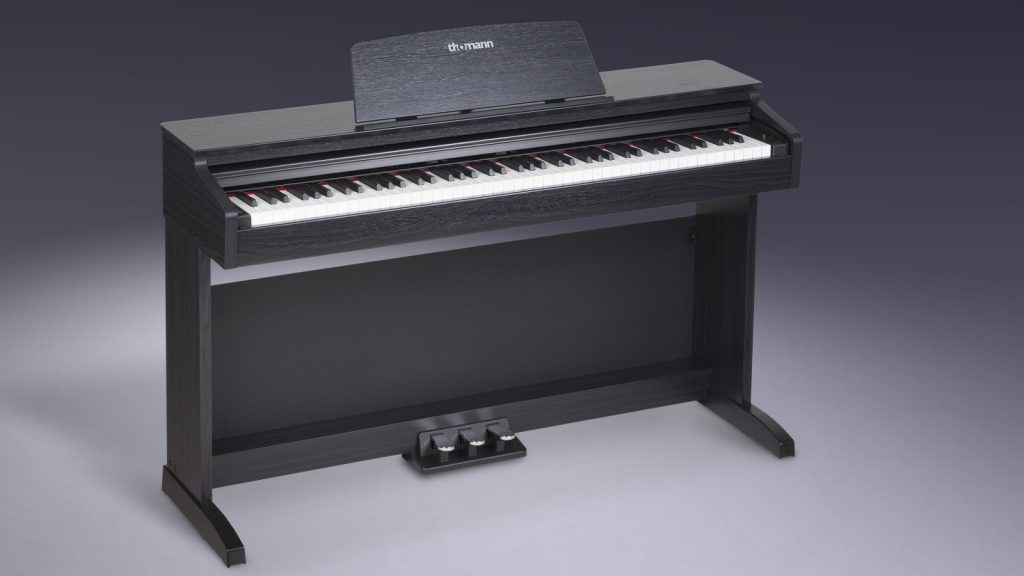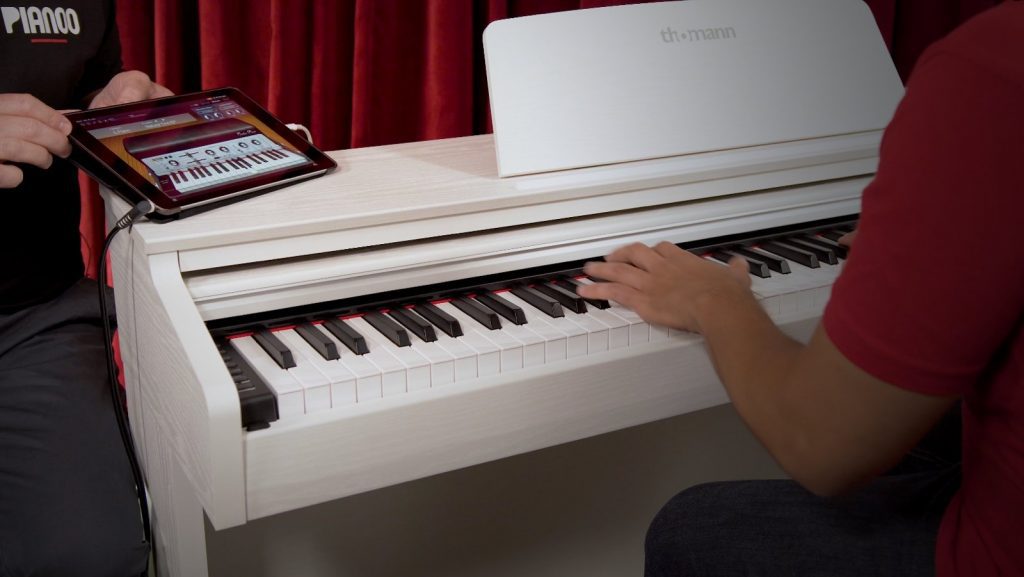The Many Sounds of the Thomann DP-32
When it comes to electric pianos, the DP-32 offers both vintage and modern DX piano sounds. E-Piano 1 has a full, brilliant sound similar to a Fender Rhodes. When playing dynamically, you may notice a slight change in velocity. Nevertheless, it’s great that you can play so expressively with this sound. In comparison, E-Piano 2 sounds a bit flat. You’ll also find typical digital piano sounds, such as harpsichord, clavinet, transistor organ, Hammond organ with a Leslie effect, and church organ.
While the additional sounds aren’t essential for playing the piano, they increase the fun factor without compromising quality. Thomann even took sound details like the attack into account. The Hammond sound with percussion is very engaging, and the chiff of the pipes in the pipe organ is realistic. An accordion is also included as a keyboard instrument. More important, however, are the beautifully dimensional strings. With their floating sound, they have an orchestral effect.






